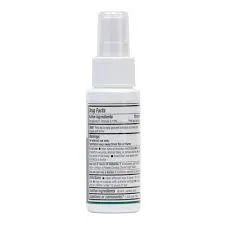polyacrylamide in water
Polyacrylamide in Water Properties, Applications, and Benefits
Polyacrylamide (PAM) is a versatile synthetic polymer derived from acrylamide monomers. Its unique properties make it an essential material in various industrial applications, particularly when dissolved in water. This article explores the characteristics of polyacrylamide in an aqueous solution, its applications, and the benefits it provides across different sectors.
Properties of Polyacrylamide in Water
Polyacrylamide is known for its high molecular weight and excellent solubility in water, which results in a viscous solution. The solubility of PAM in water is primarily due to its polar amide groups, which can form hydrogen bonds with water molecules. Depending on its formulation, polyacrylamide can exist in various forms, including anionic, cationic, and non-ionic varieties. Each type exhibits distinct properties that make it suitable for specific applications.
The concentration of polyacrylamide in an aqueous solution can influence its viscosity and clarity. Typically, a solution containing 0.1% to 0.5% polyacrylamide is common, although higher concentrations can be used in specialized applications. The viscosity of the solution increases with the concentration of the polymer, leading to enhanced thickening and stabilizing effects.
Applications of Polyacrylamide in Water
1. Water Treatment One of the primary uses of polyacrylamide is in water treatment processes. PAM acts as a flocculant, helping to aggregate suspended particles, which facilitates their removal from water. This is particularly useful in municipal wastewater treatment plants, where it aids in the clarification of effluents by promoting the sedimentation of solids.
2. Agriculture In agriculture, polyacrylamide plays a crucial role in soil stabilization and water retention. When applied to soil, PAM enhances the soil structure, reducing erosion and improving water infiltration. This property is especially beneficial in arid regions, where water conservation is essential for sustainable agriculture. Additionally, the use of PAM in irrigation systems improves the efficiency of water usage.
polyacrylamide in water

3. Mining Polyacrylamide is widely used in the mining industry for mineral processing. It aids in the separation of valuable minerals from ore by promoting flocculation, which enhances the recovery rates of metals. The use of PAM in mining operations helps to minimize environmental impact by reducing the need for hazardous chemicals.
4. Oil and Gas Industry In the oil and gas sector, polyacrylamide is employed in enhanced oil recovery processes. PAM solutions are injected into oil reservoirs to improve the flow of crude oil, thus increasing extraction efficiency. This application not only maximizes yield but also minimizes the environmental footprint of oil extraction.
5. Cosmetics and Personal Care The cosmetic industry has also recognized the potential of polyacrylamide in formulating gels and creams. Its thickening properties help create stable emulsions, while its moisturizing qualities contribute to skin hydration. Additionally, PAM’s film-forming ability helps improve the texture and longevity of personal care products.
Benefits of Polyacrylamide
The advantages of using polyacrylamide in water-based applications are manifold. First and foremost, PAM is known for its efficiency and effectiveness in enhancing processes, whether in wastewater treatment, agriculture, or industrial operations. Its ability to significantly reduce the amount of chemicals needed for processes like flocculation and soil stabilization is economically beneficial.
Moreover, polyacrylamide is generally considered safe for the environment when used appropriately and in controlled quantities. Its biodegradable forms can mitigate concerns regarding long-term environmental impact. Additionally, the versatility of PAM allows it to be tailored for specific needs, making it a valuable asset across industries.
Conclusion
Polyacrylamide in water is a powerful polymer with diverse applications that enhance the efficiency and effectiveness of various processes. From water treatment and agriculture to mining and the cosmetics industry, PAM's unique properties make it indispensable. As industries continue to seek sustainable and efficient solutions, the role of polyacrylamide is likely to expand, confirming its status as a versatile and valuable material in modern applications. Whether it's improving environmental outcomes or enhancing product performance, polyacrylamide's importance will continue to grow in the coming years.
-
2-Phosphonobutane-1,2,4-Tricarboxylic Acid: Scale & CorrosionNewsAug.29,2025
-
Premium Isothiazolinones | Broad-Spectrum Biocidal SolutionsNewsAug.28,2025
-
LK-319 Special Scale And Corrosion Inhibitor For Steel Plants: Advanced Solutions for Industrial Water SystemsNewsAug.22,2025
-
Flocculant Water Treatment: Essential Chemical Solutions for Purification ProcessesNewsAug.22,2025
-
Isothiazolinones: Versatile Microbial Control Agents for Industrial and Consumer ApplicationsNewsAug.22,2025
-
Scale Inhibitor: Key Solutions for Water System Scale PreventionNewsAug.22,2025





